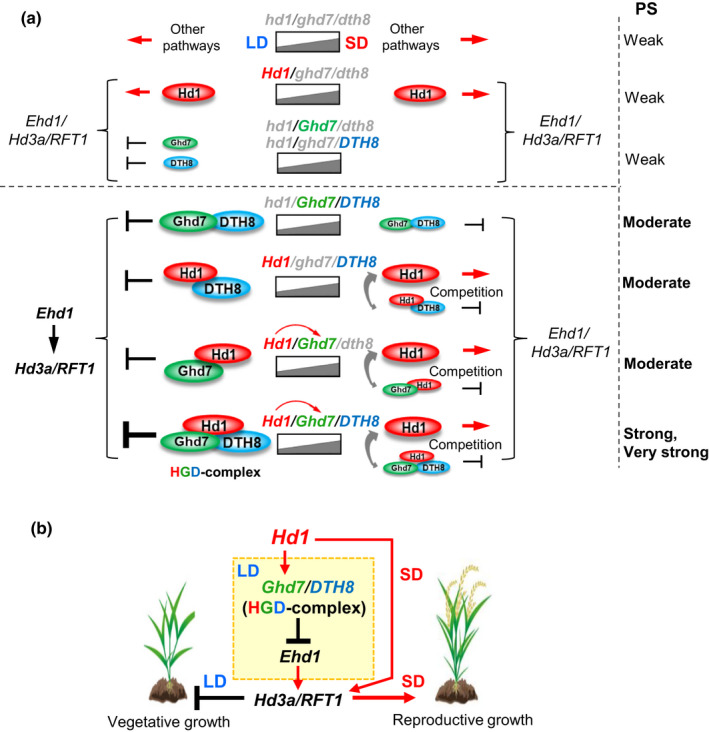Fig. 6.

A working model of the interactions among Hd1, Ghd7 and DTH8 for regulating heading date and photoperiod sensitivity (PS) in rice. (a) In the hd1/ghd7/dth8 genotype, the basal expressions of Ehd1 and Hd3a/RFT1 are regulated by other pathways. ‘Ehd1/Hd3a/RFT1’ means that expression of these genes is regulated independently by the upstream regulator(s), or Ehd1 is first regulated and then Hd3a/RFT1 are regulated by Ehd1, or both ways. In the absence of functional Ghd7 and DTH8 alleles, Hd1 shows a primary role of promoting Hd3a/RFT1 expressions and heading under both short‐day (SD) and long‐day (LD) conditions. Ghd7 (hGd) or DTH8 (hgD) alone have weak effect on suppressing heading, mainly in LD conditions. In various combinations among the Hd1, Ghd7 and DTH8 alleles, under LD conditions Hd1 promotes Ghd7 expression and is also recruited by Ghd7 and/or DTH8 to form repressive complexes that have differently enhanced suppression effects on the Ehd1‐Hd3a/RFT1 pathway for repressing heading. In SD conditions, owing to the weakened suppression effect of Ghd7, the repressive functions of these complexes are decreased, and Hd1 competes with the complexes to promoting heading with reduced extents. The interactions of the different gene combinations (including multiple allelic variations of the genes) produce various extents of suppression and promotion effects on heading in response to different day‐lengths, and thus control different heading dates and confer various degrees of PS in rice populations. The different sizes of the marks for the proteins and promotion and repression indicate their relatively different levels of effect. Notably, the HGD working model we proposed for the PS control is based on the presence of other possibly essential factor(s) that are involved in photoperiodic flowering regulation in rice. (b) Simplified rice flowering regulatory pathways mediated commonly by Hd1 in LD and SD conditions. Other known factors related to these two pathways are omitted.
